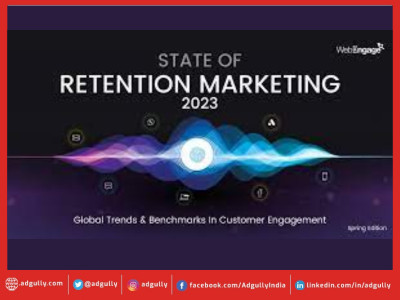3 Must have Email campaigns in your marketing strategy by WebEngage
Authored by Chirag Parmar, Lead - Customer Growth and Strategy, WebEngage
Email marketing is among one of the oldest and most popular channels of any marketing strategy for customer engagement, conversion, and retention. As per the Email Statistics Report 2022-2026, global email users are expected to rise to 4.7 billion by 2026 and the number of emails sent and received per day is forecasted to grow to over 392 billion by 2026. The ground reality shows instances where brands are getting CTRs (click-through rates) and conversion rates of 40% - 50% through email marketing, suggesting that email marketing as a channel continues to be relevant despite the growth of new channels like social media and chat apps.
In the post-pandemic world, an experimental approach towards email marketing is being observed where brands and marketers are trying to navigate the best way forward, ensuring the best outcomes and ROI for brands. Email marketing as a channel showcases a trend of seasonality, where the volumes fluctuate according to the changing market dynamics. WebEngage’s State of Retention Marketing 2023 Report, which is a study analyzing 402 Billion messages from multiple marketing channels for 1000+ brands across 8+ industries during 2022-2023, suggests that engagement increases for campaigns run during festive seasons in October, November, and December, which is reflective of said seasonality.
A successful email campaign can be achieved only when the campaign entails a balanced mix of efficient strategies. Here are 3 must-have strategies in one’s email marketing campaign for greater success:
- Create a Funnel: for easy diagnosis of the problem
While evaluating the performance of an email marketing strategy, looking only at the outcome, or the tail end of the customer journey is akin to placing a bandaid on a wound. In order to know exactly where and what point the campaign might be falling short, their entire journey needs to be mapped at a granular level - i.e. creating a marketing funnel. Creating funnels is an efficient strategy in this regard, as it helps in identifying the precise points in the funnel which aren’t as effective in the campaign and provides brands the opportunity to fix them.
A granularly divided funnel would include (but not restricted to) the following stages: the number of emails sent, delivered, opened, clicked and leading to conversions, followed by the number of users staying on the website for more than 7 seconds, and much more. Each of these stages would have its share of drop-off rates, and an examination of why that is happening will help arrive at corrective measures such that the funnel and the channel start delivering amazing results. In short, creating a funnel enables analysis of the issue, segmentation and deeper personalization, lead generation and conversion, and customer journey optimization across the email channel.
- A/B Testing: for identifying engagement
As we have observed from our experience, if a brand with low email engagement is using email marketing for blast campaigns, it would not lead to successful results and would only add to their financial costs considering email is a costly proposition.
In light of this, it becomes crucial to identify the impact that the channel is creating and accordingly decide the most contextually relevant medium and strategy based on the unique characteristics of the customer base, which can be ascertained through A/B testing. This involves developing two different versions of an email related to a particular campaign, which can be sent to two different groups. Both versions are compared against each other to determine which version performed better in terms of driving more conversions or purchases, ultimately helping in choosing the relevant targets and strategy. This provides a better understanding of consumer preferences, helps improve conversion rates, enables data-driven decision making, enhances cost efficiency, and makes room for continuous improvement.
- Great Copywriting: for the win
A great campaign needs a strong message, delivered in the most impactful manner. This requires copywriting that is sharp and engaging enough to rouse curiosity and effect action in customers. If one were to compare a high performing email campaign against an average performing one, the chances are that ‘weak content’ will feature among the reasons for why one campaign performed poorly. Moreover, the channel also determines how the copy needs to be curated. As compared to other channels, email has a lot of room to be creative and provide high personalisation, and leveraging this with compelling copywriting can set the campaign on the path to success. Moreover, it also allows a brand to establish a distinct voice and maintain a consistent brand identity, thereby enhancing engagement and increasing potential for conversions.
Based on the performance of different campaigns, we have witnessed email campaigns with great copywriting and absolute personalisation can yield 40x to 50x results, and even campaigns with no personalisation have yielded a 40% CTR based on quality copywriting.
With the right mix of strategies, email marketing can act as a powerful tool for marketing campaigns yielding great results. It can even outperform some of the other online marketing strategies like SEO and content marketing and on average, for every dollar spent, emails can drive an ROI (return on investment) of $36 which is higher than any other marketing channel.


















Share
Facebook
YouTube
Tweet
Twitter
LinkedIn